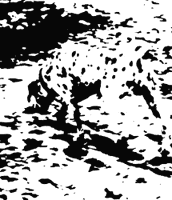Here we get our first definition of Neuronal Correlates of Consciousness of NCC.
"
(NCC) are the minimal set of neuronal events and mechanisms joingly sufficient for a specific conscious percept"
For an in depth analysis of this definition check
David Chalmer's article on the topic.
Once again we stumble upon the limitation on the definition of consciousness. Some of the difficulties that will arise are;
- Is there a NCC for each visual attribute? or for a whole scene? For example, when I see a tree with an apple hanging, should I be looking for the NCC of red, green, apple, tree, sky, ant in the grass, butterfly flying by? or should I just be looking for the NCC of the whole scene?
- Furthermore, should I be separating visual consciousness from the rest of the conscious field? John Searle (
article) argues that we should not. That the right way of approaching the problem is to understand the conscious field, and then understand how sensory experiences change this conscious field. Not how they create it.
- Is there a NCC for a concept? or for raw visual attributes? For example, in this picture

should we be looking for the NCC of the dark and white contours? Or should we be looking for the NCC of the dalmatian? Before you 'see' the dog, you can certainly see the visual features that constitute the dog, so something must change when you identify it as being a dog. Is that an NCC also?
-How do I know I am conscious of something? Because I feel it, you would say. But if I feel it, I can talk about it. I can change my behavior. Is that necessary to be conscious of something? Can I be conscious without it affecting my behavior somehow? (note that not-acting on something perceived is a behavior as well). If the answer is no, then should we be looking for the NCC of conscious perception? Or conscious decision making and motor act? Are they separable?
-If the time we exprience as continuous is in fact illusory, what happens with the neural activity correlated with it? For a NCC to exist we need a temporaly coherent conscious state. But we know it is not (
change blindness,
illusory motion,
flash-lag, etc). The reason why we believe that time goes by smoothly and linearly is because we feel it that way. But just bear in mind William James hillarious and right-on-target commentary about introspection. He says it is like “trying to turn up the gas quickly enough to see how the darkness looks."
- Can we ever generalize a conscious state? Is it possible that my current conscious state can be replicated? Hillary Putnam claims that each conscious state is unique and unreplicable. Can we then find a NCC? Sure, but it is not going to be useful in the future, because is a NCC for a conscious state long gone and never to come back.
